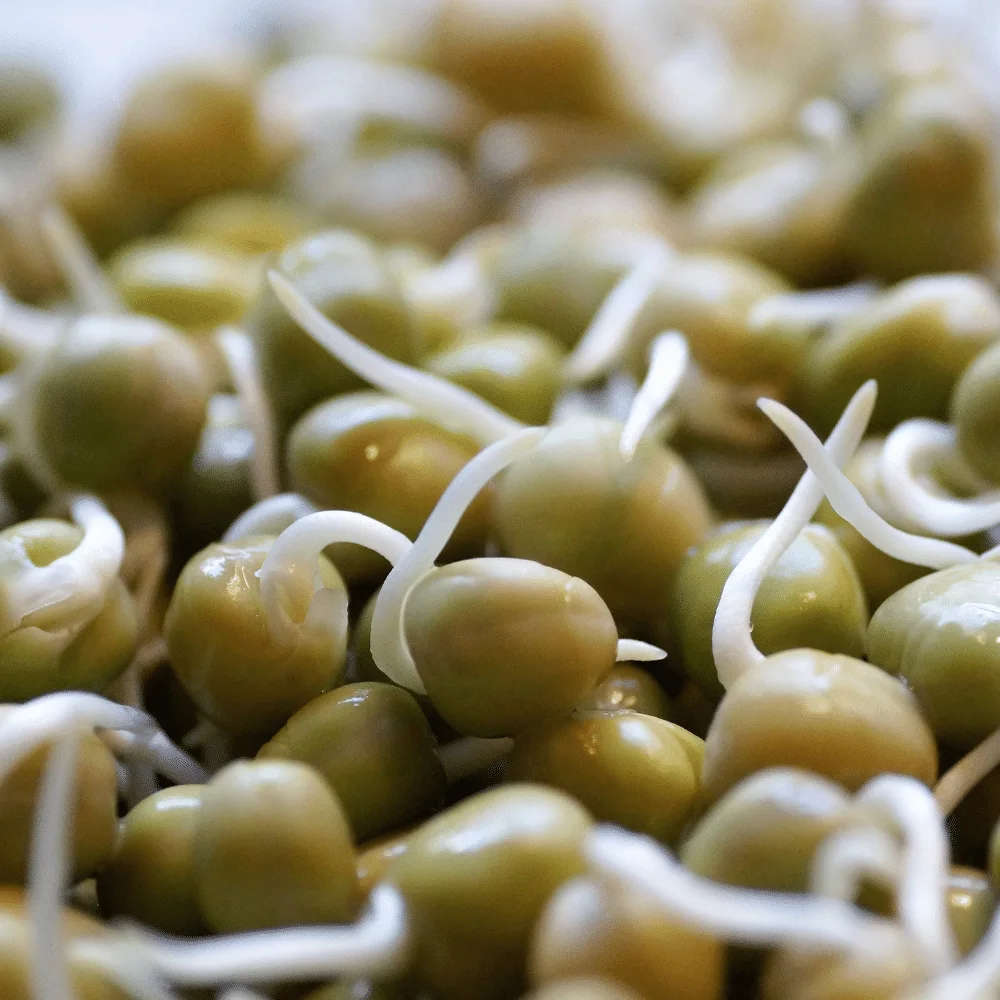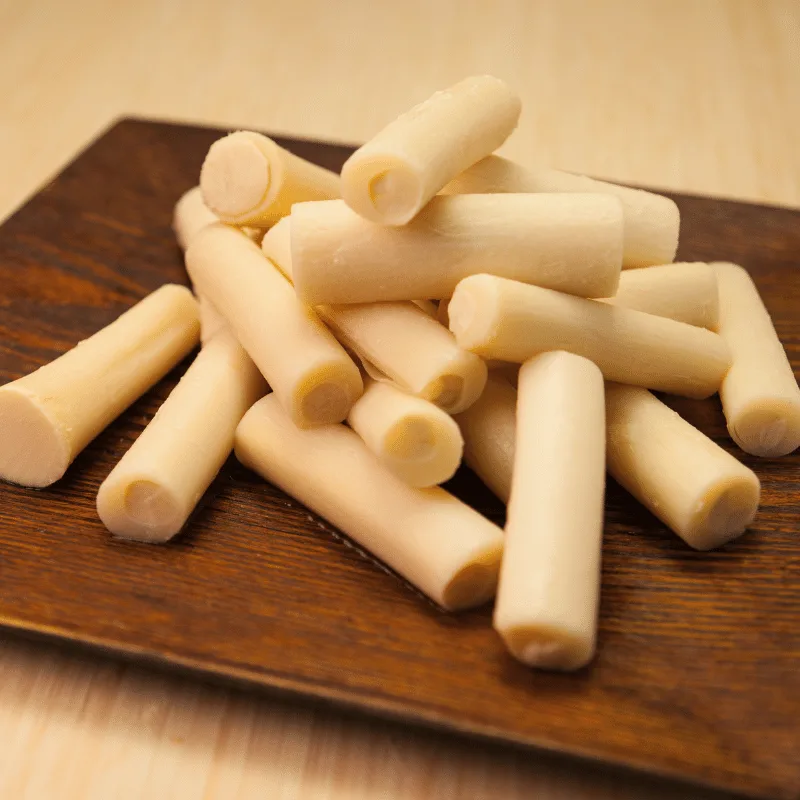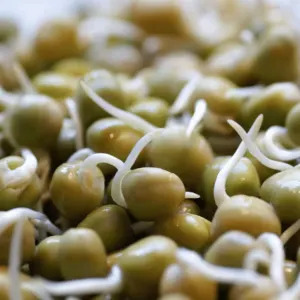Bean sprouts are a staple in many Asian dishes and can add a unique flavor to any meal.
Unfortunately, they can be difficult to find or too expensive for some budgets.
If you’re looking for an alternative to bean sprouts that won’t break the bank, there are several options available.
From water chestnuts to mushrooms and even zucchini, here is a list of the 8 best substitutes for bean sprouts that will help you create delicious meals without compromising on taste or nutrition.
What are Bean Sprouts?

Bean sprouts are edible seedlings that come from mung beans.
Mung beans, also known as green gram, are legumes native to India and have been part of traditional cuisines for centuries.
Because they’re easy to grow with minimal effort and little space required, bean sprouts quickly gained popularity across the world in many different dishes.
These small crunchy sprouts can be eaten raw or cooked, depending on preference and recipe.
Raw bean sprouts have a mild nutty flavor while cooked ones offer a more subtle taste profile that is often compared to celery.
Bean sprouts can be added to salads, stir-fries, sandwiches, and wraps for an extra crunch factor or used as a garnish for main dishes such as soups or curries.
They are also often used in Asian cuisine like pad thai and sushi rolls.
The 8 Best Substitutes For Bean Sprouts
Bean sprouts are a popular ingredient in many dishes, but unfortunately, they can be difficult to find.
Fortunately, there are several alternatives out there that can offer the same or similar flavors and textures.
Here are eight of the best substitutes for bean sprouts:
1 – Soybean Sprouts

One of the biggest reasons soybean sprouts are so popular is that they’re incredibly easy and fast to prepare.
You only need warm water, a container, and some time to wait!
Traditional bean sprouts require much more active preparation before you can use them in cooking.
Another advantage of soybean sprouts is that it has a mild flavor that won’t overpower other ingredients when added to dishes like stir-fries or soups.
And since it has an affordable price point, you don’t have to break your budget while crafting flavorful meals with these nutritious additions.
When would using soybean sprouts make sense over traditional bean sprouts?
Soybean sprouts can be steamed or cooked directly without soaking – which makes preparing food faster – while traditional bean sproats must be soaked overnight first before being cooked.
Also, the texture of soybean sprouts holds better when adding it straight into hot liquid whereas bean sprouts lose their texture easily in comparison.
2 – Snow Peas

Snow peas have been used in various dishes for centuries.
They have a mild, sweet-tasting flavor that allows them to be incorporated into many different international cuisines and traditional dishes.
The unique interesting shape of snow peas make them visually appealing on the plate compared to a more plain ingredient such as bean sprouts.
Additionally, they are comparatively crunchier than bean sprouts which adds an extra textural dimension to the dish.
As such, snow peas can stand out as a star in salads or stir-fry dishes where other ingredients provide some background presence and contrasting flavors rather than competing with the main focus of the dish.
Given their high fiber and low-calorie content, they also contribute nutritiously without having too much impact on macronutrient ratios making it particularly useful when looking to cut back on certain carbs.
Snow peas not only add nutrition but also provide bursts of color with its bright hue sure to delight any culinary master or amateur cook!
3 – Leafy Greens

One major benefit of leafy greens is the versatility they offer.
Leafy greens can be eaten raw, cooked down as a side dish in place of starchy vegetables, mixed into smoothies and juices, or added to dishes like soup and stir fry for an extra crunch!
When compared to bean sprouts, leafy greens typically provide more flavor. Spinach has an earthy taste while kale has a slightly bitter flavor that helps balance out rich dishes—something that may not be achieved with bean sprouts alone.
Additionally, many leafy greens are packed with vitamins minerals and fiber which can help boost the nutritional value of meals without being too overpowering on the palate.
It also makes sense to opt for leafy greens instead of bean sprouts when you want something heartier; while both types of produce are light enough to enjoy in salads or slaws, leafy greens often have a more textured chewiness than bean sprouts which make them perfect for sautéed dishes as well.
4 – Enoki Mushrooms

Enoki mushrooms are a type of mushroom that has become increasingly popular for its unique flavor and texture profile.
It is usually found in supermarkets and health food stores, where it is enjoyed by many.
Unlike bean sprouts, Enoki mushrooms offer a more earthy taste but with a lighter crunch.
In addition to this pleasant texture and mouthfeel, the fungi’s particular tang also makes them highly sought after in Japanese cuisine as an accenting touch to presentations such as salads or curries.
The versatility of Enoki mushrooms makes them an ideal choice when you want a unique flavor or different look in your dish without compromising on the quality of ingredients you’re using.
You can even mix other herbs and spices into the recipe—for example adding garlic powder to create garlic-flavored enokis!
5 – Mung Beans

Mung beans are an incredibly versatile ingredient that can be used in a variety of dishes.
They’re easy to prepare and cook quickly, making them an ideal addition for salads, soups, stews, and side dishes.
What makes mung beans a great choice over bean sprouts is their texture.
While both offer a crunchy bite when cooked al-dente, mung beans have more body and stay crispier than bean sprouts even after longer periods of cooking or soaking.
That means they won’t get mushy easily—making them perfect for healthy stir fry!
Finally, mung beans are also low in calories and fat while high in protein; they contain vitamins like folate and B6 as well as minerals like sodium and potassium.
Make sure you give your dishes the nutrition boost by adding some fork-tender mung beans instead of bean sprouts next time!
6 – Water Chestnuts

Water chestnuts are popular in a variety of dishes because they provide a delicious crunchy texture and taste that can’t be found anywhere else.
Whichever dish you choose to put them in, their natural crunch adds an interesting twist – perfect for salads, stir-fries, sandwiches or even as a snack.
They shine especially when paired with other vegetables such as carrots or green beans.
Not only this but due to their mild flavor, water chestnuts don’t overpower the overall flavor of the dish either!
Water chestnuts make sense to use instead of bean sprouts if you’re looking for something with more texture than what sprouts offer.
As bean sprouts tend to have much thinner skin and higher moisture content which causes them to get mushy pretty quickly when cooked, water chestnuts give sturdy frozen fruits that retain their fantastic firmness while adding great flavor at the same time.
7 – Bamboo Shoots

Bamboo shoots are incredibly popular for several great reasons.
For one thing, they add a unique flavor and texture to any dish that can’t be replicated with other ingredients.
Their taste is slightly sweet and earthy, which makes it work well in many dishes.
What’s more, they’re also quite versatile: you can use them in soups and stir-fries, or even pickle them for a crunchy snack.
Bamboo shoots are also very nutritious because of their high vitamin and mineral content—they contain B vitamins, vitamin C, iron, magnesium, and more.
Not only do they provide these nutrients to the body; they also have anti-inflammatory properties due to an antioxidant called saponin.
When it comes to when it would make sense to use bamboo shoots instead of bean sprouts—it all depends on the dish!
If you want something with a sweeter or earthier taste than what bean sprouts offer (which has its own unique yet mild flavor), then consider using bamboo shoots.
They can easily enhance any cuisine without overpowering the other flavors too much!
8 – Julienned Zucchini
Julienned zucchini is a popular ingredient for a variety of reasons.
For starters, it’s incredibly versatile and easy to prepare—simply slice it into thin strips for use in dishes!
This makes it simple to add flavor and texture to any dish quickly.
The flavor of julienned zucchini also stands out against bolder flavors.
So while bean sprouts can be overwhelmed by other ingredients in some dishes, julienned zucchini will hold its own in the mix due to its crunchy texture.
This also means that julienned zucchini works better when you’re looking for subtle pieces of volume and texture as opposed to something with more obvious visual appeal like bean sprouts.
In fact, one might even say that julienned zucchini adds a wow-factor where bean sprouts simply cannot—the perfect choice for this type of modern presentation!
Conclusion
In conclusion, there are several different substitutes for bean sprouts that can help you create delicious meals without compromising on taste or nutrition.
From soybean sprouts to snow peas, leafy greens, enoki mushrooms, mung beans, water chestnuts, bamboo shoots, and julienned zucchini, there is a wide variety of alternatives that can be used in place of bean sprouts.
Whether you are looking for a cost-effective solution or simply want to try something new and different, these substitutes for bean sprouts can help you create tasty and nutritious meals.

The 8 Best Substitutes For Bean Sprouts
Ingredients
- Soybean Sprouts
- Snow Peas
- Leafy Greens
- Enoki Mushrooms
- Mung Beans
- Water Chestnuts
- Bamboo Shoots
- Julienned Zucchini
Instructions
- Pick your favorite substitute from the list above.
- Follow cooking directions for your selected substitute with the proper ratio of ingredients.
Hi, I'm Benjamin. I love cooking, long walks, and my girlfriend! Here you’ll find simple and delicious recipes that you can make in 30 minutes or less.

